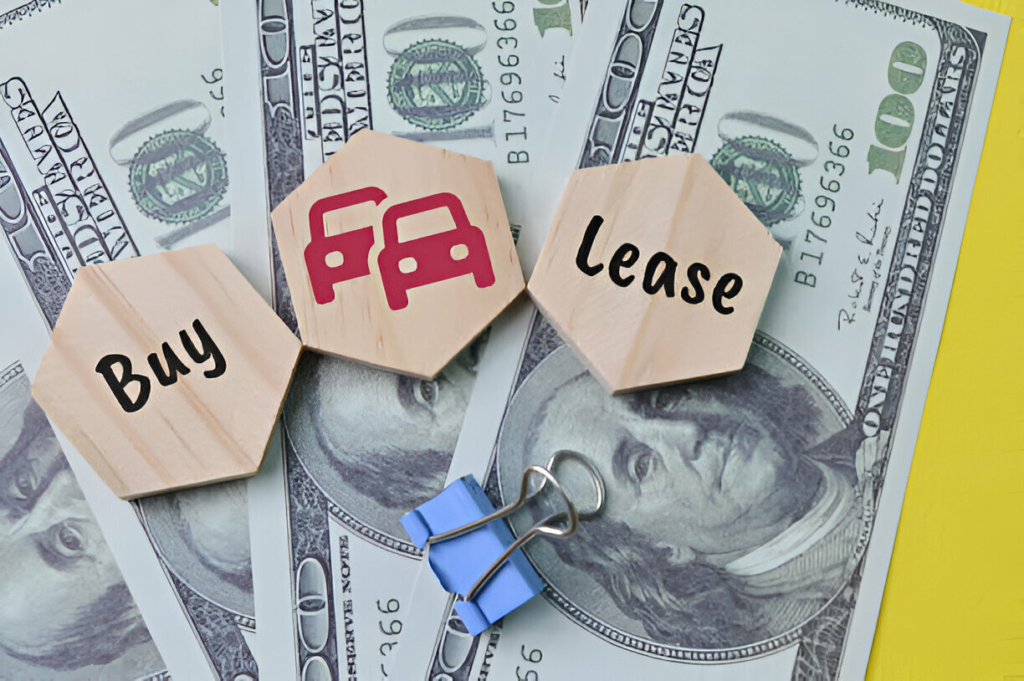In the competitive world of commercial real estate, particularly within the single-tenant net lease (STNL) space, investors often face a pivotal decision: Should they prioritize the stability of a long-term lease or chase the potentially higher yield associated with a high capitalization (cap) rate? This question is especially crucial for those engaging in a triple net (NNN) 1031 exchange or evaluating NNN property for sale. The outcome of this decision can significantly impact both short-term cash flow and long-term capital appreciation.
Understanding the Investment Landscape
A triple net lease (NNN) places the responsibility for taxes, insurance, and maintenance squarely on the tenant. This model, particularly attractive to passive investors, forms the backbone of many 1031 exchange properties for sale. Investors in these assets typically value low-touch management, predictable income, and strong tenant credit. However, the structure and terms of each NNN lease vary widely, and these differences influence the investment’s yield and risk profile.
What Is a Long-Term Lease?
A long-term lease in NNN investing generally spans 10 to 20 years. These leases are favored by conservative investors who prioritize income stability and tenant continuity. Properties with long leases are often occupied by national credit tenants such as Walgreens, Dollar General, or McDonald’s.
Advantages of Long-Term Leases:
- Predictable Income Stream: Long leases offer steady passive net-lease income with minimal disruption.
- Favorable Financing: Lenders often prefer long-term leases for underwriting, making financing easier and potentially less expensive.
- Stronger Tenant Relationships: Longer terms foster enduring partnerships with reliable tenants.
- Efficient for 1031 Exchange Execution: Easier to qualify under safe-harbor 1031 timelines.
However, the trade-off is typically a lower cap rate. Investors pay a premium for the security and ease of ownership that a long-term lease provides. The peace of mind in knowing that a tenant is committed to 15 or 20 years with little to no landlord responsibilities is worth the lower return to many investors. This is especially true for retirees or those looking to passively grow wealth while minimizing involvement.
What Is a High Cap Rate Investment?
A high cap rate generally signals greater immediate income potential, often found in assets with shorter lease terms or secondary market locations. While the returns may be higher, these deals carry more risk. Cap rates may be elevated because of perceived instability, tenant credit concerns, or market dynamics where demand is lower.
Advantages of High Cap Rate Assets:
- Higher Initial Cash Flow: Greater returns on investment early in the ownership period.
- Potential for Repositioning: Opportunities to renegotiate lease terms or increase rents at expiration.
- Lower Purchase Price: Investors can enter markets at a discount relative to long-term leased assets.
Risks to Consider:
- Lease Rollover Uncertainty: Vacancies and tenant turnover are more likely.
- Financing Challenges: Shorter leases make banks more cautious.
- Greater Asset Management Needs: Active involvement may be necessary to stabilize income.
The high cap rate strategy often appeals to seasoned investors with time and resources to manage lease renewals or reposition the asset. These investors may also be targeting areas where market appreciation potential offsets the initial risk.
Current Market Data and Cap Rate Trends
As of Q2 2025, the NNN market has experienced some stabilization. According to data from CBRE and recent commercial investment briefs:
- Overall cap rates are averaging 6.79%.
- Retail properties hover around 6.57%, office at 7.85%, and industrial at 7.23% (Credaily, Jul 12, 2025).
- Long-term leases (15-20 years) command cap rates in the 5.6% range.
- Short-term leases (under 5 years) are seeing cap rates exceed 7.9%.
These numbers highlight the yield versus stability trade-off: investors can opt for lower risk and steady returns or accept more volatility for higher income. Investors should be wary of short-term lease investments where tenant history or financial strength is questionable. In such cases, due diligence becomes critical.
Strategic Use of 1031 Exchange Tools
When using a 1031 exchange to defer capital gains, timing and asset quality are paramount. Properties with long-term leases typically align better with the replacement property 45-day rule and safe-harbor 1031 timelines. These assets streamline lender approvals and reduce closing complications.
Shorter lease deals can also be used effectively in a triple net (NNN) 1031 exchange, but the investor must be nimble and understand that risk exposure may increase, especially if the deal falls through. DST 1031 listings under $1M often use long-term leased assets to provide investors with less risk and more predictable outcomes. This makes them appealing in time-constrained 1031 transactions.
Tax Considerations and Bonus Depreciation
From a tax efficiency standpoint, properties that qualify as bonus depreciation–eligible property are significantly more attractive. This is especially true for newer constructions or substantial improvements that allow for a cost-segregation study real estate approach. This tax planning tool helps investors front-load depreciation, allowing for:
- Accelerated Deductions: Improved after-tax returns in the early years.
- 100 percent bonus depreciation real estate benefits before potential legislative phase-outs.
- Higher ROI Calculations: Enhances the appeal of high cap rate properties if their physical condition supports it.
Tax-advantaged real estate investment continues to attract attention in 2025, particularly as more investors focus on yield in a high interest rate environment. For example, a newly constructed drugstore leased to a national tenant with a 15-year lease could allow the owner to deduct over 20% of the purchase price in the first year using bonus depreciation and cost segregation.
DST 1031 Listings Under $1M and Entry-Level Options
Many first-time investors or those with limited capital gravitate toward DST 1031 listings under $1M. These options are often structured with long-term leases in mind, offering turnkey, passive income.
Benefits include:
- Diversification: Multiple properties or fractional ownership reduce risk.
- Professional Management: Eliminates the burden of hands-on operations.
- Lower Entry Cost: Allows smaller investors access to stable income streams.
These DST investments are increasingly popular for retirees looking for mailbox money while also deferring capital gains taxes. The investor does not need to actively manage the property and receives a consistent check every month, making it ideal for estate planning or legacy building.
Real-World Comparison: Long-Term vs. High Cap Rate
Consider the following comparative analysis for a $1 million investment:
| Feature | Long-Term Lease (15 yrs) | High Cap Rate (5 yrs) |
| Cap Rate | 5.5% | 7.5% |
| NOI (Year 1) | $55,000 | $75,000 |
| Tenant Risk | Low | Moderate to High |
| Lease Turnover | Very Low | High |
| Financing Availability | Broad | Limited |
| Management Intensity | Minimal | Moderate |
This table illustrates the foundational difference: while the high cap rate property produces more income up front, it comes with significant management obligations and potential vacancies. For long-term leases, the trade-off is less cash flow but fewer headaches and more lender-friendly terms.
Who Should Choose What?
Choose a Long-Term Lease If You:
- Want stability and minimal oversight.
- Are completing a 1031 exchange with tight deadlines.
- Need lender-friendly asset profiles.
- Are focused on wealth preservation over income growth.
Choose a High Cap Rate Deal If You:
- Are an experienced investor comfortable with active management.
- Seek maximum short-term yield.
- Want to reposition or redevelop the asset.
- Can accept re-leasing and tenant turnover risk.
Hybrid Strategy: Some investors blend both approaches—acquiring a mix of high cap and long-term assets to balance cash flow and appreciation. This method diversifies the portfolio, mitigates concentration risk, and enhances total return potential.
For instance, a high cap rate industrial warehouse in a tertiary market might complement a long-term leased drugstore in a primary location. This approach ensures that some portion of the portfolio is always generating stable income, while the other part is positioned for growth.
Investor Tips
- Use a NNN Lease ROI Calculator: Run multiple scenarios to gauge sensitivity to interest rates, tenant credit, and lease expiration.
- Review Triple-Net Cap Rate Trends Regularly: Monitor market shifts for entry and exit timing.
- Understand the Replacement Property 45-Day Rule: Timing your acquisitions in a 1031 exchange is key to avoiding tax penalties.
- Use Cost Segregation Wisely: Amplify depreciation benefits on eligible assets.
- Assess the Local Market and Tenant Demand: Properties in strong demographic areas with essential service tenants offer more resilience.
- Read the Lease Carefully: Pay attention to lease escalations, assignment clauses, and default provisions.
- Build Relationships with Brokers: Local expertise can help uncover off-market opportunities.
- Track Economic Indicators: Inflation, interest rates, and consumer behavior all impact cap rate movements.
- Use Technology Tools: Platforms like 1031DealHub offer searchable filters for lease term, tenant type, and cap rate.
- Stay Informed on Legislation: Tax laws affecting 1031 exchanges or bonus depreciation can change.
Final Thoughts
In conclusion, the battle between long-term leases and high cap rates in NNN investing is not a matter of right or wrong—it’s about alignment with the investor’s risk appetite, tax strategy, and income goals. Long-term leases are ideal for those seeking predictability and minimal hassle, while high cap rate deals suit investors looking for higher cash flow and willing to handle more active management.
Either path can lead to success if executed with clarity, due diligence, and a firm grasp of both macroeconomic trends and local real estate fundamentals. Hybrid strategies are increasingly common and provide investors the ability to capitalize on both worlds, blending the stability of long leases with the upside of higher returns.
Disclaimer
I am not a CPA, attorney, broker-dealer, or investment adviser. This content is for general education and must not be relied upon for tax, legal, or accounting advice. Always consult your licensed professional. Federal and state rules change frequently; info may become outdated.
- Circular 230 Notice: Nothing here is intended for, nor can it be used for, avoiding U.S. tax penalties.
- Advertising Disclosure. Posts may reference services offered by AMC Real Estate Investment Services and affiliates, including 1031DealHub.
- Forward-Looking Statements. Any opinions or projections are based on current data and may change without notice.





